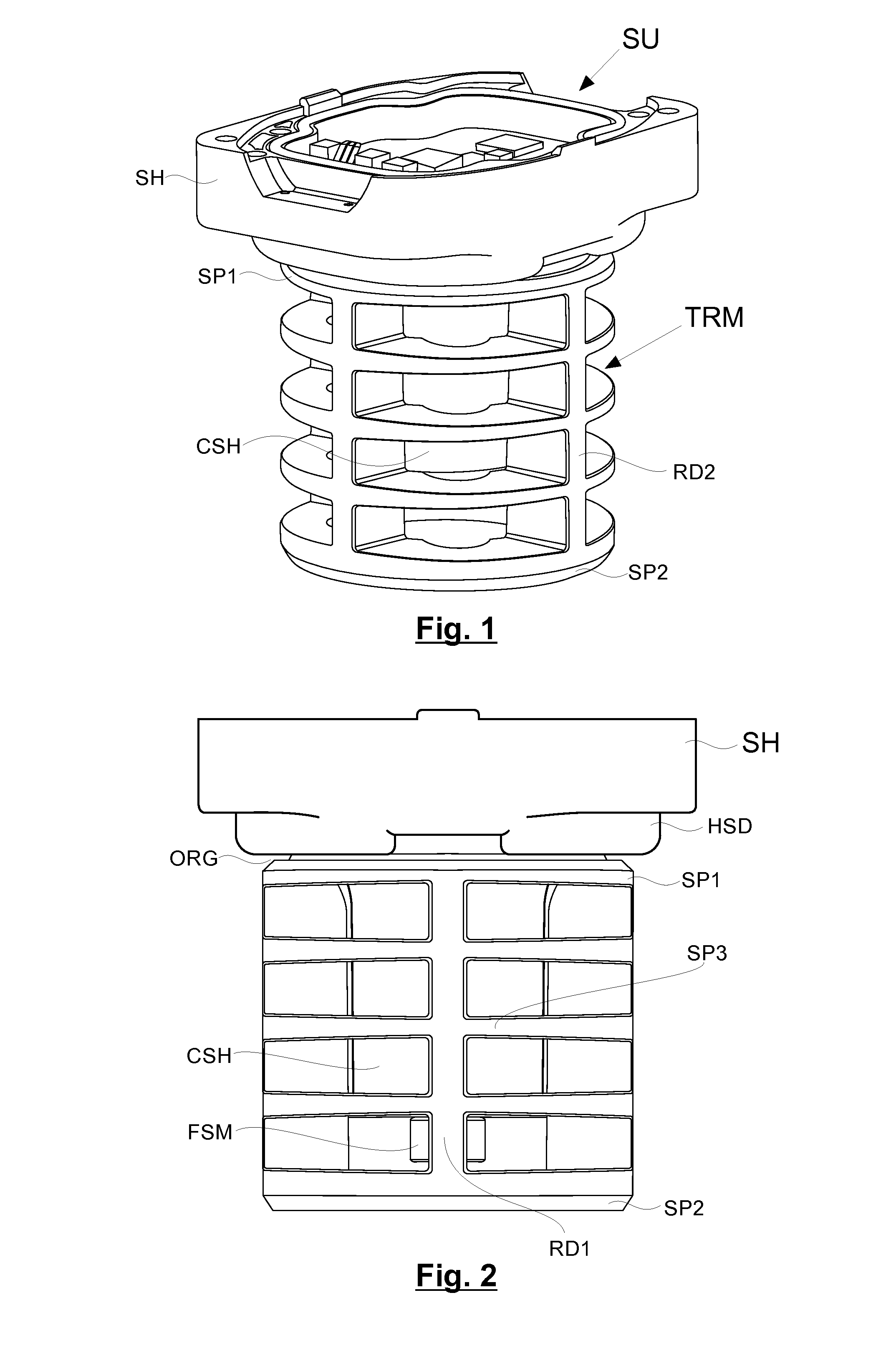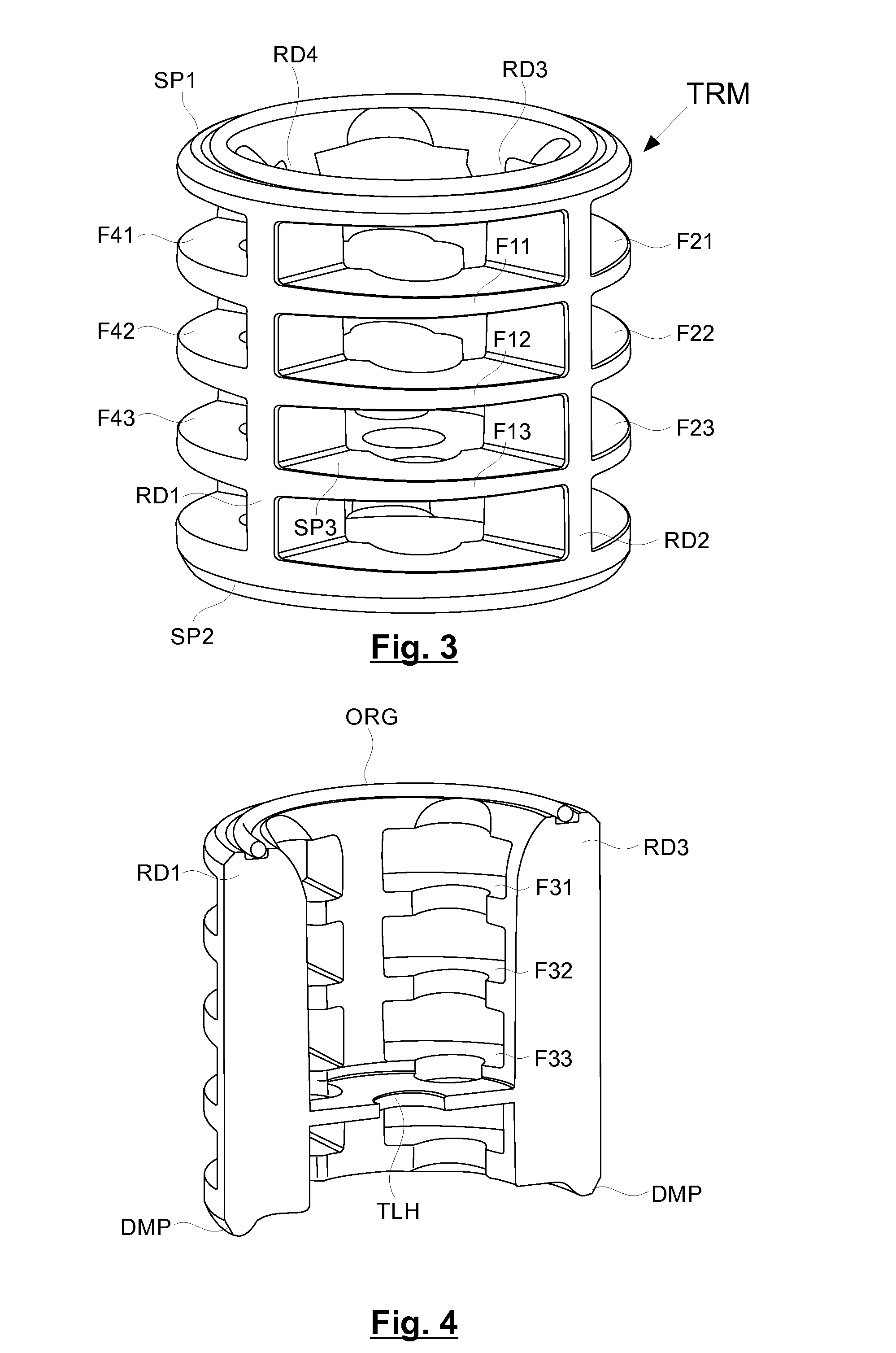Coupling Device for Seismic Sensors
- Summary
- Abstract
- Description
- Claims
- Application Information
AI Technical Summary
Benefits of technology
Problems solved by technology
Method used
Image
Examples
Embodiment Construction
5.1 General Principle
[0037]The coupling device according to an embodiment of the invention is remarkable in that it enables to solve two problems simultaneously, by means of at least one supporting portion which will maintain the sensor unit in a stable position when resting on or buried into the ground, while a rod or rods linking both supporting portions will provide an additional stiffness to the sensor unit's housing.
5.2 Description of a Specific Embodiment
[0038]FIG. 1 and FIG. 2 disclose a coupling device TRM for a sensor unit SU comprising at least one sensor located within a housing SH, which coupling device TRM includes in this embodiment four rods of which only a first and a second rods RD1 and RD2 are shown here.
[0039]The sensor may be a one vertical component digital sensor or a three orthogonal component digital sensor like a geophone or an accelerometer.
[0040]The coupling device TRM features a first supporting portion SP1 featuring a groove supporting an O-ring ORG agai...
PUM
 Login to View More
Login to View More Abstract
Description
Claims
Application Information
 Login to View More
Login to View More - R&D
- Intellectual Property
- Life Sciences
- Materials
- Tech Scout
- Unparalleled Data Quality
- Higher Quality Content
- 60% Fewer Hallucinations
Browse by: Latest US Patents, China's latest patents, Technical Efficacy Thesaurus, Application Domain, Technology Topic, Popular Technical Reports.
© 2025 PatSnap. All rights reserved.Legal|Privacy policy|Modern Slavery Act Transparency Statement|Sitemap|About US| Contact US: help@patsnap.com



